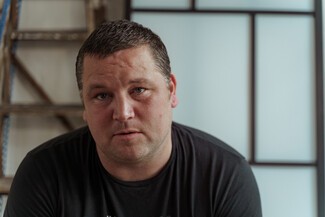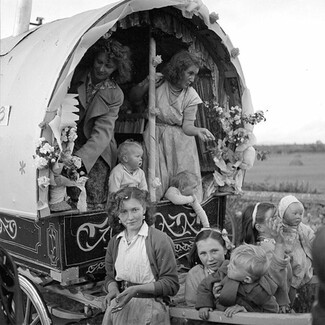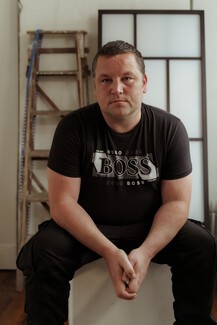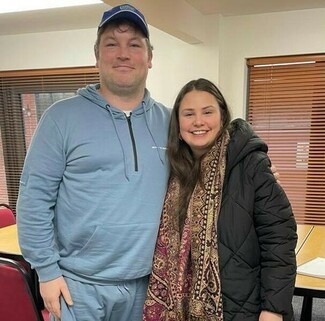“A ferocious fight” – John Connors on Ireland’s Travellers and enduring centuries of state violence

“When I look at my nieces and nephews and all I ever wanted was them not to be called K******* or P***** in school, but they've already been called it and they are ten now, and they’ve been called it for years - and you realise that the fight is such a ferocious fight.”
John Connors, the award-winning film and TV director, producer and actor, has come over to England from Eire to take part in a video to raise awareness about the suicide epidemic that is tearing apart Travellers communities on both sides of the Irish Sea. While he was in the UK, John Connors - a hero to many Travellers – has taken time out to be interviewed by the Travellers’ Times Lisa Smith. The topics they covered ranged far and wide. This article, which focusses on the historical and ongoing forced assimilation and settlement by the racist Irish state of Irish Travellers – or Mincéir and Pavee in their own language – is taken from the transcript of that recorded interview.

“The whole mission in Ireland was to resettle us,” says John Connors. He adds that the narrative that Irish Travellers were originally Irish people settled people uprooted by the potato famine, or, before that, the conquest of Ireland is a false narrative. This was covered in the three-part award-winning documentary series John Connors- The Travellers, he continues.
“We did DNA studies, we did linguistic studies, we got the top anthropologists in Ireland, who all said no anthropologist ever believed that narrative, because in no time in human history have a people become nomadic, over time, everyone was nomadic and then became settled,” says John Connors. “So, in the case of Ireland with Irish Travellers we were Travellers like the rest of the population. But we refused to stop travelling.” The question isn’t when did Travellers start travelling, it's when did settled people start settling, explains John Connors.
John Connors then describes the infamous 1963 Irish Government report on itineracy that came about after a Commission set up by the Irish politician Charles Haughey - who later became the Prime Minister of Ireland. The report, says Connors specifically set up to find “the final solution to the itinerant problem,” less than 20 years after Nazi Germany were using the same language to describe their genocidal policies to find a “final solution to the Jewish problem.”

“We had elected officials in that commission: ministers, councillors, TDs, all different kinds of politicians talking about sterilising Traveller women as a solution and castrating men or sending them out to Spike Ireland to breed out or to take itinerant away from their parents,” says John Connors.
Haughey’s 1963 report only accelerated and made clear the purpose the Irish State’s ongoing forced assimilation and settlement - or destruction - of Irish Traveller identity and nomadism, adds John Connors, which is the single root cause of many of the problems that Travellers face today.
“I think it's something like only 24% of Travellers live on Traveller sites in Ireland, so they mostly live in council estates and what you're seeing is an increase in alcoholism and in drug addiction which has gone through the roof,” says John Connors. “We don't need to be f*cking Sigmund Freud to know that when you mess with someone's identity, it's catastrophic. Young Travellers are growing up without having a great grasp of their language and their culture and then going to school and being discriminated for it. I look at places in Ireland, like Limerick, some of the sites are in terrible conditions. It's horrifying. So then when they get offered a council house. Of course, they are going to take it to get out.”
The Travellers coming off the sites are then settled and rehoused by the councils on the outskirts of a town and outskirts of a suburb or a city, explains John Connors, creating a gap between them and the local settled people. This is also where the Traveller sites themselves mostly are, meaning that the state itself is creating a fundamental division between Travellers and settled people, which is almost impossible for the two separated communities to bridge. “The settled people are never going to get along with the Travellers when they meet each other,” says John Connors. “It's all been designed that way. Travellers have no involvement in where or how the sites are built. There's no cultural relevance to the sites (and) the walls could be twenty foot high. The objective is to hide us from the rest of the population. And then twenty years later, with Travellers high birth rates, the sites are over-populated and become ghettos, adds John Connors.

“It's a war of attrition and the (state) has all the resources and it's very hard to beat the system in a war of attrition,” says John Connors. “It's colonial tactics. The Irish Government and successive governments have just been using the exact same tactics that the British used against the Irish in general for the last eight hundred years of colonialism. Ireland was the last country in Europe to settle. 5OO years ago two thirds of the Irish population travelled - and it was the British monarch that settled the population. The settled population became bigger and bigger and bigger and the want to travel became smaller and smaller until all that was left is what we now know as Irish Travellers - the Mincéir and Pavee. They do not realise that by eliminating us and destroying us, they're eliminating Irish culture and history,” adds John Connors.
“They want you to assimilate, which is not what we want,” says John Connors. “We want to integrate for sure, but never assimilate.”
Interview by Lisa Smith, write up by Mike Doherty / TT Features
(Lead photograph: John Connors (c) Shane O'Connors)